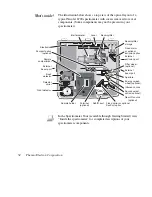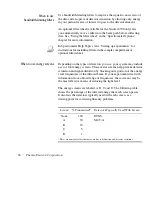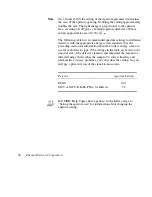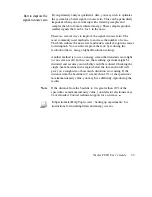
To correct for photometric accuracy, you may need to add a “heavier”
screen (one that transmits less infrared energy). With corrections for
photometric accuracy you will notice some reduction in the signal-to-
noise ratio but will obtain more reliable quantitative data. Generally,
the signal-to-noise ratio is reduced less than is the signal intensity.
In Spectrometer Help Topics view “Setting up experiments” for
instructions for installing energy screens in the sample compartment.
An optional energy screen wheel lets you automatically move a
screen into the beam path before collecting data. See “Using the
energy screen wheel” in the “Spectrometer Options” chapter for
more information.
What aperture size
to use for your detector
The aperture in a Nicolet 6700 is a variable-diameter opening that
controls the angular size of the infrared beam and, thus, the amount of
radiation that reaches the sample. Using an aperture has these
advantages:
•
It lets you use more sensitive detectors.
•
It helps prevent infrared energy saturation, so the response of the
detector is more linear.
•
It improves wavenumber accuracy and resolution by acting as a
point source of infrared radiation.
In general you will find that the larger the aperture, the better is the
signal-to-noise ratio of the collected data. The smaller the aperture,
the better the stability and accuracy will be. Small apertures are
needed for high-resolution experiments.
DTGS detectors can accommodate most of the energy from the
source, which means you should use a large aperture size. Detectors
that require cooling with liquid nitrogen are very sensitive and
require a small aperture size or the use of an energy screen (see the
preceding section for more information).
Nicolet FT-IR User’s Guide 67






























